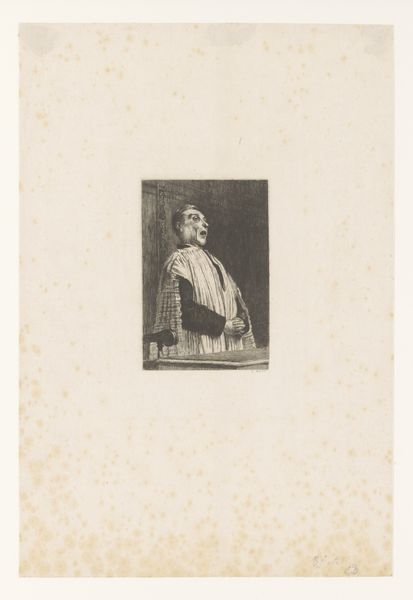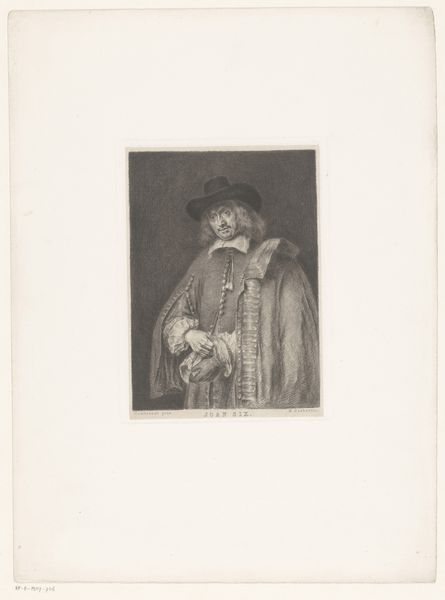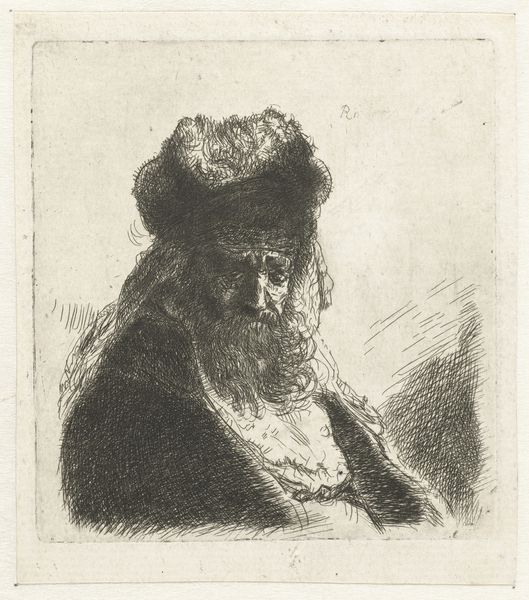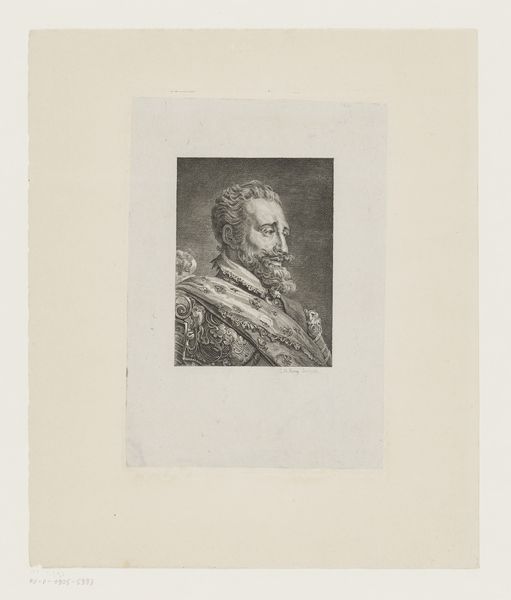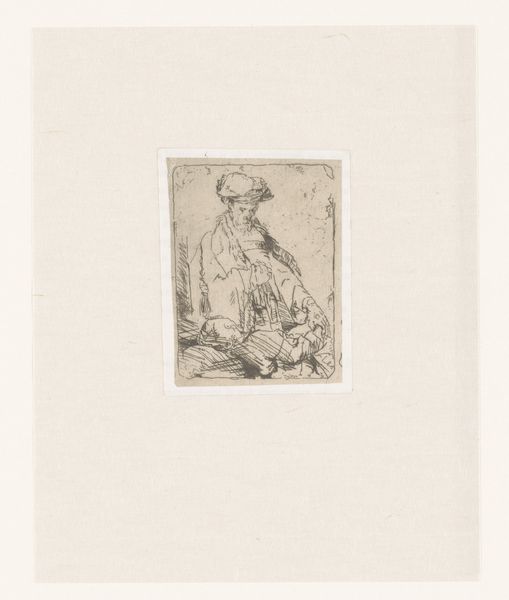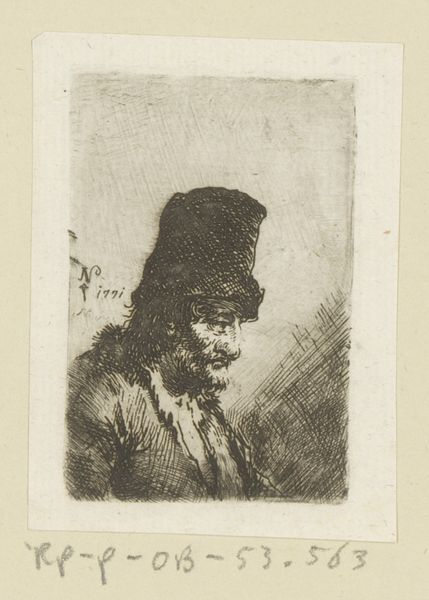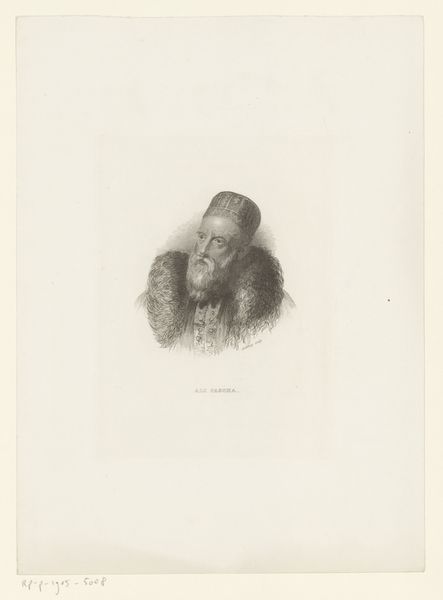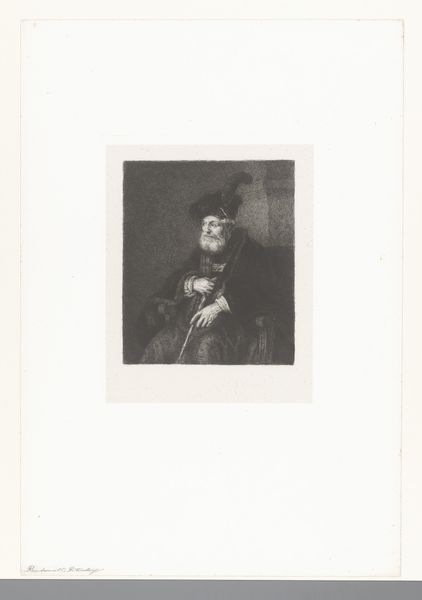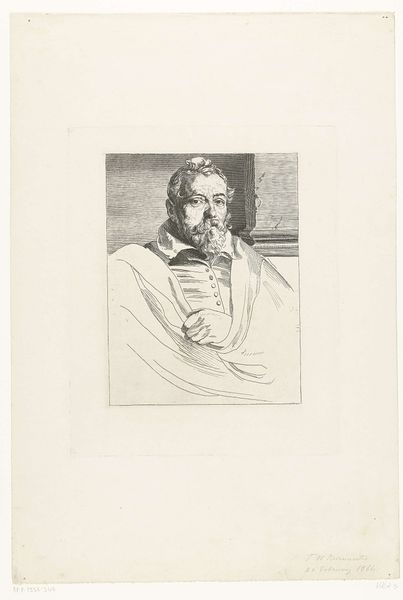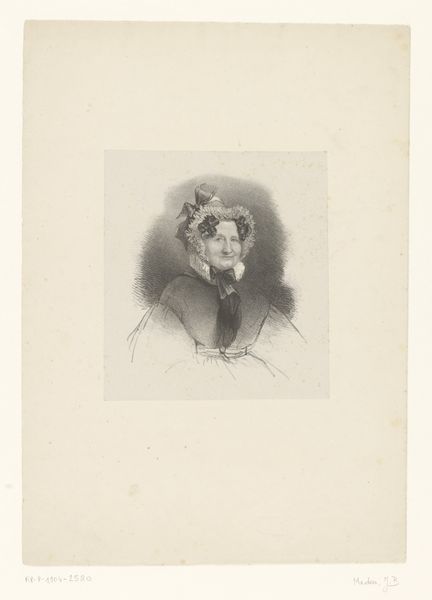
Dimensions: height 152 mm, width 114 mm
Copyright: Rijks Museum: Open Domain
Curator: Looking at this etching, it’s hard not to be struck by its detail, despite its relatively small size. The way the lines capture the texture of the fur cap is remarkable. Editor: It evokes a feeling of solitude, even weariness, doesn't it? The closed eyes contribute to that mood, shutting the figure off from the world. Curator: Indeed. The artwork is titled "Bearded old man in a high fur cap, with eyes closed". It was created by Georg Leopold Hertel in 1761 and we're fortunate to have it here at the Rijksmuseum. The etching method allows for such fine lines and gradations of tone. Thinking about printmaking at this time, we have to remember it’s an essentially reproductive technology. Editor: A powerful way of disseminating imagery to a wide audience. What could an image like this, depicting perhaps a scholar or a philosopher, have signified in 18th-century society? Was this distributed amongst intellectuals, or did its reach extend further? Curator: It's also fascinating to consider the economic conditions of printmaking then, too. How much did the production of this image cost, and how would that shape who could afford to own or trade in prints such as this? We have to recall that while a printed image has that quality of reproducibility and repeatability, this is still an object. The quality of the paper itself is part of this work's own historical and material reality. Editor: The fact that the old man's eyes are closed intrigues me. Usually, portraiture seeks to capture the gaze, to connect the viewer with the subject. But here, Hertel deliberately denies us that connection. I wonder, is this a comment on the nature of perception, or perhaps mortality? Curator: That’s a poignant point to consider. The fur cap itself, luxurious, textural: the materials involved, their accessibility and expense, speak volumes. To consider, who would possess a fur cap of such height and expense, and what does that tell us of the politics and class structure of Hertel's day? Editor: Thinking about the broader context, the work exists at a fascinating point in art history, straddling the late Baroque and the burgeoning Neoclassical styles. We need to consider the rise of the merchant classes at the time. The artwork perhaps becomes not only a visual object but also a social artifact. Curator: Indeed. I’ve gained a deeper appreciation for the work by reflecting on both its material qualities and its potential historical interpretation. Editor: As have I. This glimpse into a past individual opens up larger questions about perception, labor, and class during a fascinating era of shifting social dynamics.
Comments
No comments
Be the first to comment and join the conversation on the ultimate creative platform.
